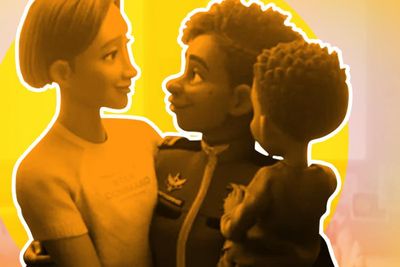Toy Story was the first fully computer animated film and the first breakout hit for Pixar that ended up turning it into an instant classic. The excitement for the continuation of a feel good classic, however, was at times overshadowed by the manufactured outrage of a minority of Americans who are still living in self-imposed religious dark ages.
Lightyear features an LGBTQ+ space ranger named Alisha Hawthorne, a character in the new film who is married to a woman and who share a child together. Disney had previously alluded to having queer characters in previous films, but had never had explicit representation - something that almost didn’t happen for this film either. While it was still planned for the character to be married to a woman, the kiss between the couple that some complained about almost didn’t make it to the big screen. It was only after Pixar employees sent a statement to the Walt Disney Company demanding that the scene be put back into the film.
Despite decades of progress on LGBTQ rights, there are still people who consider a kiss between two women controversial and the movie was subsequently banned in 14 religiously conservative countries like Saudi Arabia and Malaysia.
The response from some in the older generation who were mainly manufacturing the outrage over the 1 second scene cited the typical “concern” for their children, yet many of these same parents allow their children to be exposed to violence, sexaul harassment and abuse, and a litany of other arguably more terrible movie scenes on a daily basis and often from other Disney and Pixar movies.
What’s evident is that more of these scenes and media representation of the LGBTQ+ community are needed, not less.
So grab a ticket and some popcorn because despite some legitimately questionable reviews, if you want to show support for Lightyear, sitting through a mediocre movie will still be worth it for LGBTQ representation.
